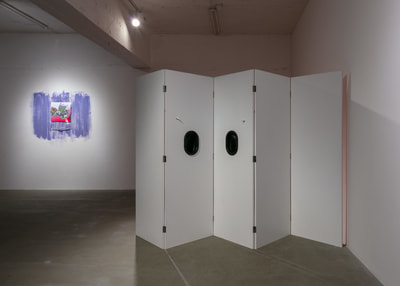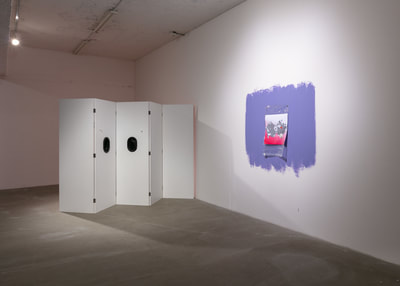Only the Lonely
|
Nadim ABBAS WANG Tuo 1 September - 29 September 2018 Opening: Saturday, 1 September 2018, 4-7 pm In this exhibition, Hong Kong artists Nadim ABBAS and Beijing-based WANG Tuo join forces to create a site-specific mixed-media and video installation. Although they work in different mediums, the two artists share a fascination for urban subcultures, especially the world of manga and anime enthusiasts. In their work, the artists use this phenomenon as a lens through which they explore different concepts of reality. Both take inspiration from the figure of the otaku - a Japanese term referring generally to a person with obsessive interests, and more specifically to a fan of manga and anime. Many otaku prefer the imaginary world to the real one, some to the point of withdrawing completely from society and refusing to leave their rooms for years. In Japan, an estimated 500,000 people, most of them young men, live as domestic hermits, also called hikikomori. ABBAS has repeatedly used otaku culture as a starting point for his mixed-media installations. His work is less concerned with the figure of the otaku himself; it rather deals with the kind of space that gives rise to the mindset of manga and anime fans. In past installations, the artist has employed objects such as floor lamps or houseplants to indicate a domestic setting, and has occasionally asked performers to inhabit the gallery space. In this installation, ABBAS uses ordinary components such as mass-produced furniture and other everyday items. By manipulating and combining elements such as room dividers, bookshelves and a free-standing door frame, he creates objects that play with the tension between separation and permeability. Otaku culture is only one of many reference points in these works; they also carry erotic undertones as well as hints of horror. WANG's contribution, the three-channel video installation "Spiral", draws parallels between the world of architecture and that of the otaku in order to explore the complex relationship between space and desire. Live-action segments show an architect both in the office, where he uses a computer to design the blueprint for a spiral staircase, and at home, where he surrounds himself with anime figurines. In this way, the video reveals a kinship between the blueprint of the architect and the two-dimensional aesthetics favoured by the otaku. In other scenes, it compares the role of the architect to that of a manga artist, and suggests that they interact with their surroundings in a similar way. WANG's work highlights the underlying tension between the simplified world of blueprints and anime characters on the one hand and the reality of offices and apartments on the other. Trying to translate the former into the latter can be considered an act of aggression. The blueprint of an architect can be turned into a real structure, but the finished building inevitably exercises power over its users. "There is no architecture without violence", as the French-Swiss architect Bernard Tschumi has pointed out. According to WANG, the two-dimensional space of manga and anime may carry a similar potential for violence. |



















